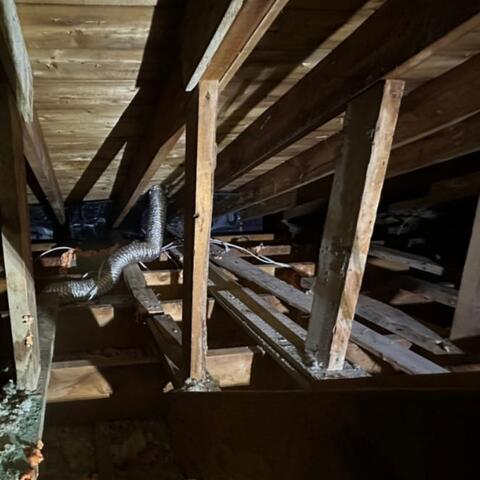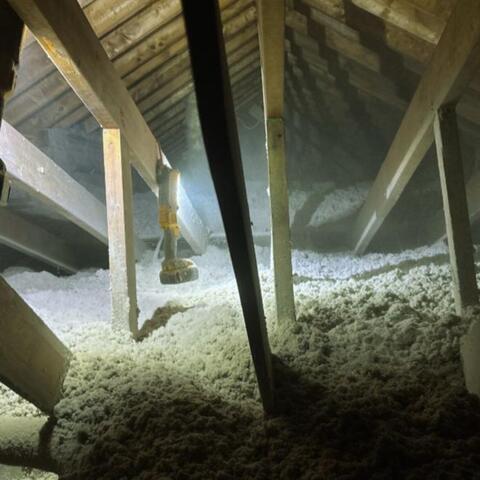Before & After Photos
Click on a photo to enlarge.
Attic Insulation in Otterburn Park
In Otterburn Park, a client contacted us as he facing problems within his attic. In fact, he had fiberglass placed within his attic, but he was not getting the needed results. Upon inspection, our specialist explained that the fiberglass were not well placed: The problematic area were not covered, which was affecting the insulation's performance. In addition, the quantity of fiberglass installed was not adequate to reach the thermal value of R60.
As a solution, we removed the existing insulation, which started to rot due to excess moisture. Then, we made sure all the air leaks were sealed in order to maximize the insulation's performance. And lastly, we blew in about 17 inches of our TruSoft cellulose insulation to reach the suitable thermal value.
Isolation parfaite d'un grenier à Saint-Antoine-Sur-Richelieu, Québec
Nous avons reçu un appel d’un propriétaire résident à Saint-Antoine-Sur-Richelieu, Québec qui souhaitait inspecter son grenier après qu'il a remarqué la présence de quelques tâches noires sur le bois dans le grenier. L’un de nos spécialistes certifiés a visité afin de procéder à une inspection complète. Les tâches noires étaient de la moisissure ; signe d'une humidité excessive dans le grenier, et des infiltrations d'air.
Pour y remédier une fois pour toute, notre équipe a procédé au colmatage des fuites d’air, à la decontamination des spores de moisissure avec notre produit Mold-X2 et à l’ajout de 17 pouces de cellulose soufflée TruSoft, permettant d’atteindre une valeur isolante de R60. La transformation fut radicale, au sein du grenier et même dans la maison.
Attic Insulation in Saint-Antoine-Sur-Richelieu, Quebec
We received a call from a homeowner in Saint-Antoine-Sur-Richelieu, Quebec, who wanted to have their attic inspected after noticing some black stains on the wooden ceiling. One of our specialists visited the home to carry out a thorough inspection. The black spores turned out to be mold ; a clear sign of excessive humidity in the attic and air infiltration issues.
To resolve the problem once and for all, our team sealed all air leaks using ZypFoam, decontaminated the mold spores using our Mold-X2 treatment, and added 17 inches of TruSoft blown-in cellulose insulation, achieving an R60 insulation value. The transformation was dramatic, both in the attic and throughout the entire home.
Effective insulation, lasting results in Saint-Antoine-Sur-Richelieu, Quebec!
The attic of a house in Saint-Antoine-Sur-Richelieu, Quebec, had significant heat loss due to poor insulation and numerous air leaks. Our energy efficiency specialists completely removed the existing insulation, followed by careful sealing of air infiltration points.
We then blown in TrueSoft cellulose, known for its high R-value and eco-friendly qualities. The result was a permanent, airtight thermal insulation in the attic.
TiteShell protection for depressed lighting in Mont-Saint-Hilaire, Qc
This product is crucial before insulating the attic. If you have recessed lights, these protective boxes prevent air warmed by the light from entering the attic through the cane and wire holes. Hot air impairs insulation in the attic. If air leaks are not sealed properly, you are not taking advantage of the maximum capacity that your insulation can offer you. Hiding the problem under insulation is not the same as fixing it. In addition, the majority of insulation products are not flame retardant. It is dangerous to put insulation directly on recessed lights.
For more information about TiteShell enclosures, contact us today and we'll be happy to send you an insulation specialist to give you a completely free, no-obligation estimate.













